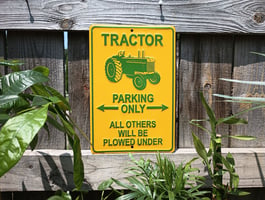Not many people want to be farmers. Many want to but don't think they can. Why can't they?...
Label Libel: Things Are Not What They Seem
"Organic"
"All Natural"
"Cage Free"
"No-Till"
All of these are labels designed intentionally to be misinterpreted. Organic, in its old usage, is a good thing. Organic matter just means natural matter that rots down. But the new definition of "Organic" is really just a legal term. Here's the deal. There are a bunch of criteria for something to be organic. Here's a list from the USDA on what is allowed:
As algicide, disinfectants, and sanitizer, including irrigation system cleaning systems.
(1) Alcohols.
(i) Ethanol.
(ii) Isopropanol.
(2) Chlorine materials—For pre-harvest use, residual chlorine levels in the water in direct crop contact or as water from cleaning irrigation systems applied to soil must not exceed the maximum residual disinfectant limit under the Safe Drinking Water Act, except that chlorine products may be used in edible sprout production according to EPA label directions.
(i) Calcium hypochlorite.
(ii) Chlorine dioxide.
(iii) Hypochlorous acid—generated from electrolyzed water.
(iv) Potassium hypochlorite—for use in water for irrigation purposes.
(v) Sodium hypochlorite.
(3) Copper sulfate—for use as an algicide in aquatic rice systems, is limited to one application per field during any 24-month period. Application rates are limited to those which do not increase baseline soil test values for copper over a timeframe agreed upon by the producer and accredited certifying agent.
(4) Hydrogen peroxide.
(5) Ozone gas—for use as an irrigation system cleaner only.
(6) Peracetic acid—for use in disinfecting equipment, seed, and asexually propagated planting material. Also permitted in hydrogen peroxide formulations as allowed in § 205.601(a) at concentration of no more than 6% as indicated on the pesticide product label.
(7) Soap-based algicide/demossers.
(8) Sodium carbonate peroxyhydrate (CAS #-15630-89-4)—Federal law restricts the use of this substance in food crop production to approved food uses identified on the product label.
(b) As herbicides, weed barriers, as applicable.
That's a lot of chemicals you didn't know were in your "organic" food, and that's just the beginning. One of the first ones that is in the prohibited list: horse manure. Really? Is this really worth paying extra for? Folks, this is just a quick look at what "organic" really means. Ant to get that "organic" label, you just need 95% organic ingredients. The "Made With Organic Ingredients" label does not mean that it is "organic", it means it is 70% organic. It is meant to deceive consumers to buy products at a higher price.
Now for the vague "All Natural" label. Here's the FDA definition:
“Nothing artificial or synthetic (including all color additives regardless of source) has been included in, or has been added to, a food that would not normally be expected to be in that food”.
That sounds pretty good at first, but look again:
“Nothing artificial or synthetic (including all color additives regardless of source) has been included in, or has been added to, a food that would not normally be expected to be in that food”.



